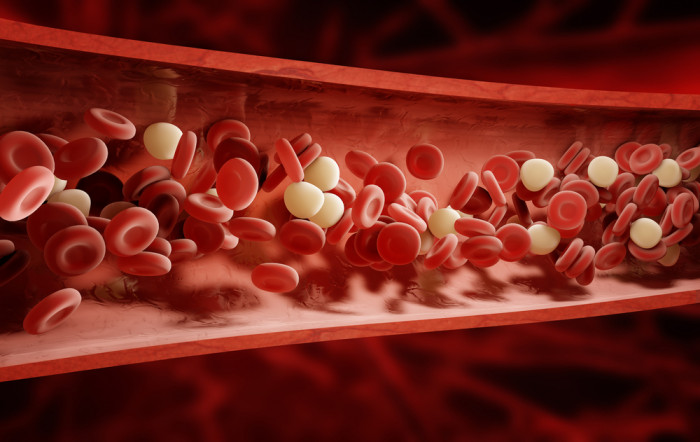Risk of Blood Clots Persists for 6 Months After Curative Surgery

The risk of blood clot formation — commonly higher than normal in people with Cushing’s syndrome — persists during the first six months after curative surgery, but is comparable to that of healthy people in patients achieving long-term remission, a study has found.
These findings may help physicians decide when to administer preventive treatment for this complication in Cushing’s syndrome patients, according to researchers.
The study, “Evaluation of procoagulant imbalance in Cushing’s syndrome after short- and long-term remission of disease,” was published in the Journal of Endocrinological Investigation.
People with endogenous Cushing’s syndrome have excess levels of the hormone cortisol in circulation — often due to a tumor in the pituitary or adrenal glands. When the source of the problem is the pituitary gland, the condition is known as Cushing’s disease.
Ectopic Cushing’s syndrome arises from the overproduction of cortisol due to tumors found outside the pituitary and adrenal glands, most commonly those associated with small cell lung cancer.
An imbalance in cortisol levels may lead to several complications, including cardiovascular problems. Among these, a condition called venous thromboembolism, or VTE, is particularly common in Cushing’s syndrome patients. VTE occurs when blood clots form in the deep veins of the legs, groin, or arms, then travel and lodge in the lungs.
Estimates show that the risk for VTE is 17.8 times higher in Cushing’s syndrome patients compared with the general population.
This increased risk has been linked to an imbalance in pro- and anticoagulant factors, the regulatory players of the blood clotting process, where the molecule thrombin plays a major role. Thrombin is a unique molecule that functions both as a procoagulant and anticoagulant.
However, whether this imbalance is resolved following disease remission after curative surgery is unclear.
To answer this question, a group of researchers in Italy turned to a thrombin generation assay or TGA — a test that can be used to assess the balance between pro- and anticoagulant factors. This test was performed on 38 people: a group of 19 Cushing’s syndrome patients who achieved disease remission after surgery, and 19 age- and gender-matched healthy individuals, who served as controls.
TGA was done with and without the addition of the natural anticoagulant thrombomodulin (TM).
Specifically, researchers measured the endogenous thrombin potential (ETP), that is, the body’s ability to generate thrombin, and the ETP-ratio — the ratio between ETP values measured in the presence of TM and those measured in the absence of TM.
A high ETP and ETP-ratio both indicated a higher tendency for blood clot formation.
Among the 19 patients included in the analyses, 16 had Cushing’s disease, two had adrenal Cushing’s syndrome, and one had ectopic Cushing’s syndrome. All patients underwent surgical treatment.
Cortisol levels and TGA parameters were measured before surgery, as well as a median of six months (short-term follow-up) and five years (long-term follow-up) after the procedure. TGA parameters also were measured in a subgroup of eight patients after a median of 15 months following surgery. All patients remained in biochemical remission during the entire follow-up period.
Other lab parameters, including body mass index (a measure of body fat) and blood sugar levels, also were evaluated.
Before surgery, patients had a statistically significant higher ETP-ratio than the healthy controls (0.62 vs. 0.56), indicating a higher tendency for blood clot formation. However, no significant correlation was established between the ETP-ratio and cortisol levels.
Six months after surgery, the patients’ ETP-ratio was still similar to that of the study’s start (baseline) and remained significantly higher compared with controls (0.64 vs. 0.56). A similar pattern was observed for ETP.
After a period of five years, however, patients showed a significant decrease of both ETP (1,835 vs. 2,045 nanomole per liter per minute) and ETP-ratio (0.55 vs. 0.62) when compared with baseline.
Most importantly, no statistically significant differences were seen in either of these two parameters between controls and patients after a period of five years.
No VTE events were observed in any of the patients.
Overall, these findings suggest that a tendency for blood clot formation persists in the first six months after remission, but the risk is “completely reversed in the long-term follow-up in patients who achieve disease remission,” theresearchers wrote.
“Our data should be taken into consideration when evaluating thrombotic risk and choice/duration of antithrombotic prophylaxis [preventive treatment] in this category of patients,” they wrote.






